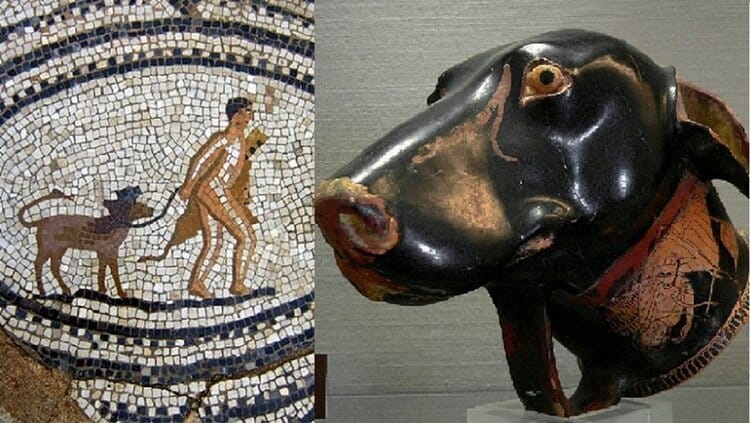The ancient Greeks have given so many great things to the world: fantastic art and philosophy, mind-blowing mythology, democracy and… unique dog breeds!
Indeed you have seen many dog videos, either educational or funny, but have you ever wondered which of these dogs belong to a Greek breed?
Many breeds of dogs are found in ancient Greece, where they were mainly used for hunting, protection or even sometimes in battles.
Like many others, these Greek dog breeds were domesticated and have been with us for many years.
They are man’s best friends, as it has been said many times, and it is worth adding one – or why not more – fluffy friends to our family.
So let’s see more information about 6 Greek dog breeds rooted in ancient Greece.
Alopekis
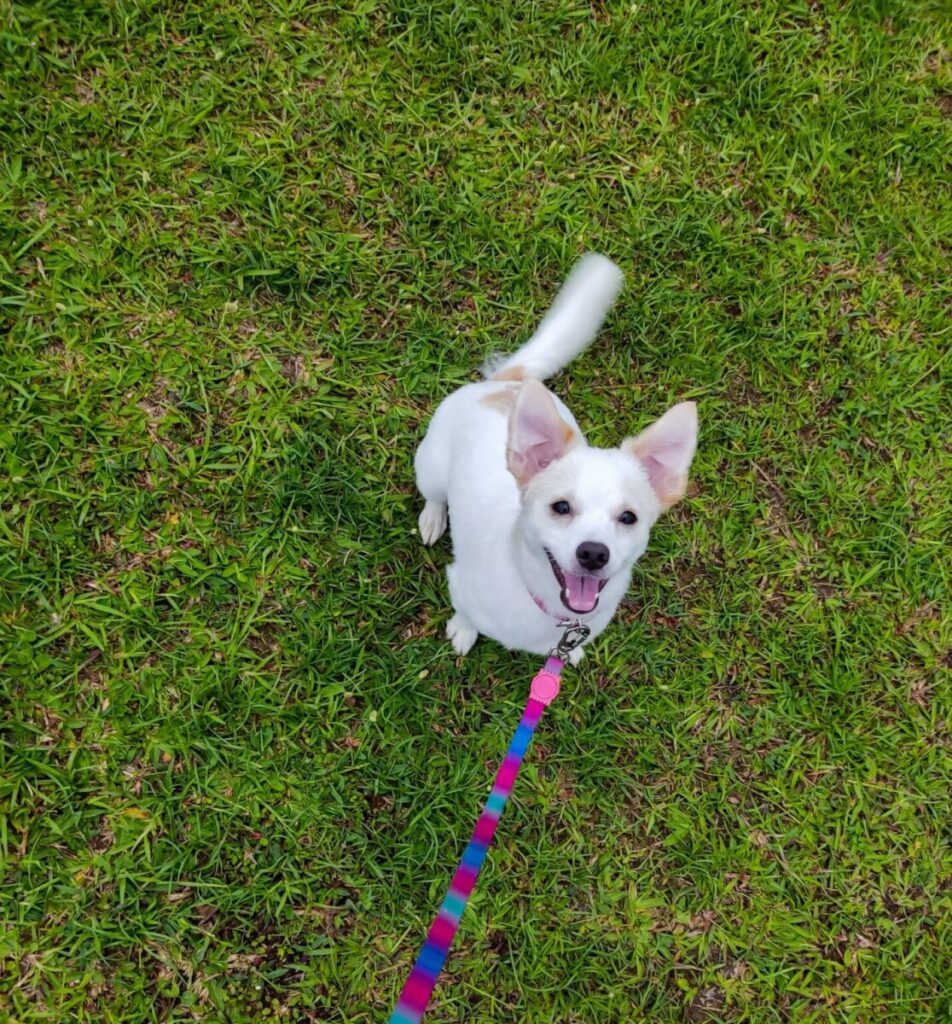
The name Alopekis means “little fox” or “fox-like”. It belongs to the primitive wolf-like dogs; it has erect ears, a wedge-shaped head, and large almond-shaped eyes; it is medium in size with a height of up to 30 cm and a fluffy, curved tail.
Several ancient Greek classical authors like Aristotle, Xenophon and Aristophanes mention the breed. It is depicted in many archaeological finds from the Post-Paleolithic era in Thessaly, such as ceramics, sculptures, figurines and tombs.
Xenophon mentions alopecia as one of the two main Greek archetypes of dogs in his work “Kynigetikos”. Ancient authors believed that alopecias were created by mating dogs and foxes. Another name attributed to them in ancient times was “Kynalopex”, which means fox-dog.
Other local folk names found in recent years are Alepuditsa, Alepudoskylo, Ventaki in Crete, Zacharoskylo in Skiathos, Moropa, which is a Pontic name and means “babies” again in Crete, Bombis or Bouboudi in Serres and Tsoupi or Tsupaki, which means little girl in Achaia and Ilia.
Alopekis’s have traditionally been used to guard flocks as they are guard dogs that warn of potential danger, threat or intruder. They perceive natural phenomena before they happen, such as an impending earthquake.
These beautiful dogs are also suitable as companion dogs because they are not only watchdogs, despite their small size, but also because they have incredibly high emotional perception, intelligence, and adaptability and are very easy to train.
They are protective, affectionate, very friendly with children and develop strong bonds with their guardians. The sable is probably the oldest dog breed surviving in Europe, but unfortunately, it is now a critically endangered breed, and the need to protect it immediately is imperative.
Greek Harehound
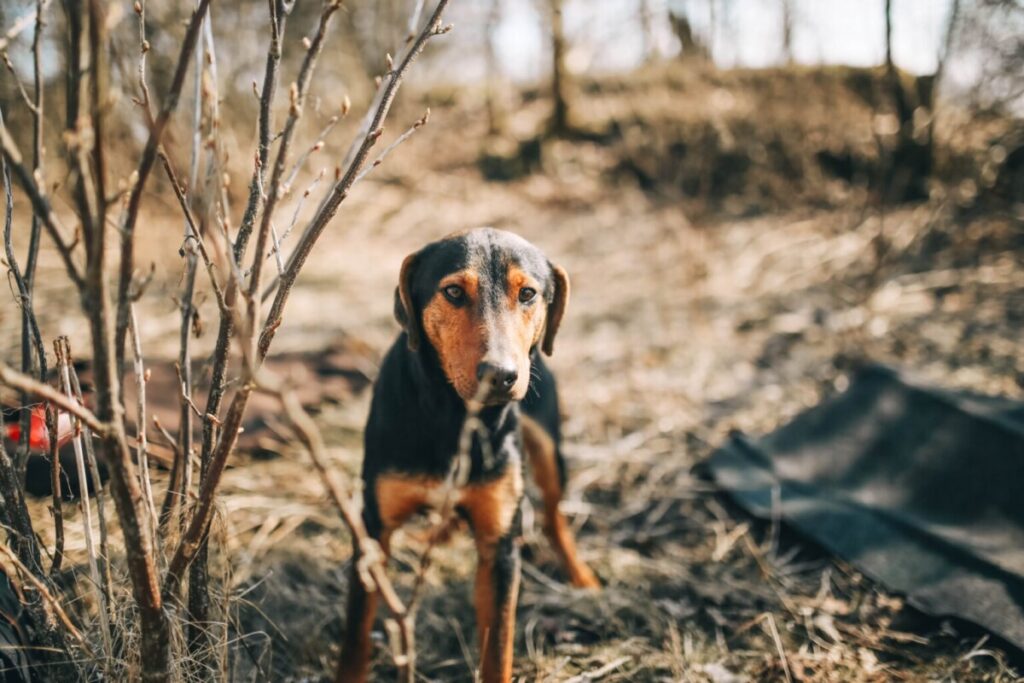
The Greek Tracker, Greek Harehound, Gekas, or Zagariis is one of the almost unchanged dog breeds that have survived since ancient Greece. This may be because this dog breed lived in inaccessible mountainous regions, with little competition from other breeds.
Due to this, their DNA has remained intact over the years.
The ancestors of the Greek Harehound are the ancient Laconian dogs of the Peloponnese, which accompanied the ancient seafarers on their travels. In battles, these dogs were often used as messengers.
They have an excellent sense of smell and great endurance, so they were initially bred as hunting dogs, mainly for hunting hare and deer in ancient Greece, especially in Laconia, Argolis and Crete.
Several ancient Greek wall paintings, vases and coins confirm that the Greek Harehound has existed for many thousands of years in Greek lands since we see them accompanying hunters, warriors, and even the goddess Artemis.
They reach a height of 55 cm and a weight of 25 kg. In Greece, officially recognised Greek harehounds have a short rough, black and brown coat. They are pretty lively dogs, strong, rough, intelligent and friendly.
Today, the Greek Harehound is the only breed originating from Greece recognised by the Fédération Cynologique Internationale.
Greek shepherd
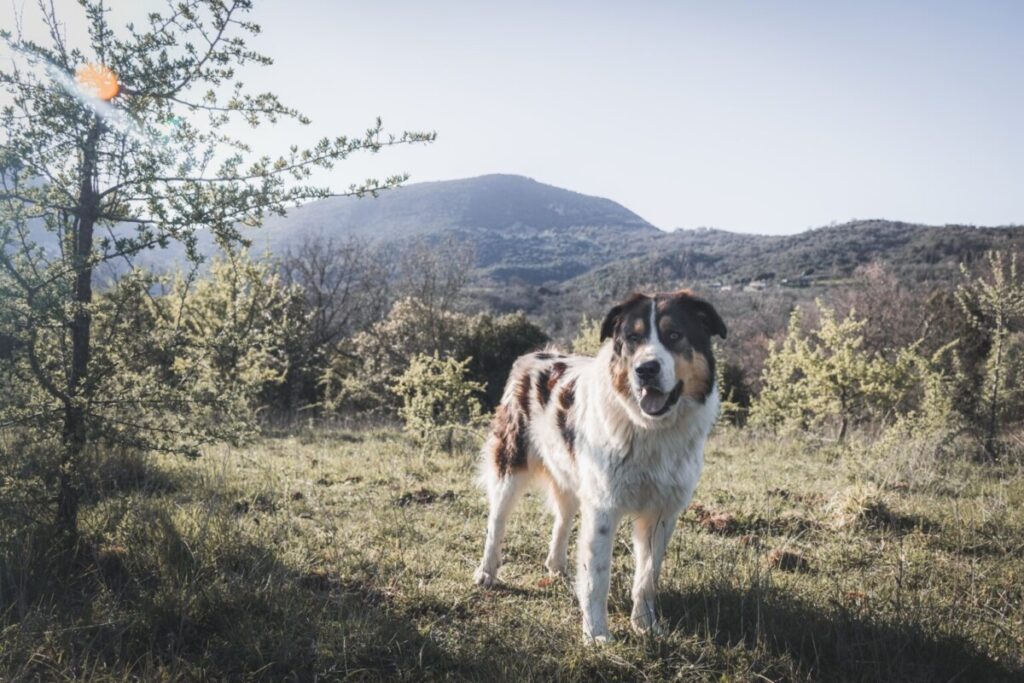
The Greek shepherd is a guard dog, bred for centuries to protect animals in the country’s mountainous regions. The Greek shepherd, or shepherd dog, is another breed from Greece and is very similar to the Molossus.
It was formed and developed in ancient Greece and is mentioned in the Homeric epics, such as the well-known dog of Odysseus, Argos.
They have a large head, and broad chest, which makes them ideal for repelling predators; they are usually found in black, white, grey or a combination of these three colours and reach a height of 75 cm and a weight of 50 kg.
They are a very hardy and strong breed and do not hesitate to defend themselves against larger and stronger animals such as wolves or bears. They are dedicated, highly intelligent and athletic, so they are a popular working dog.
Their thick coat easily matches the rocky and rugged landscape of the Greek countryside. Unfortunately, with the decline of animal husbandry and the increase of crossbreeding with other dogs, the characteristics of the Greek Shepherd have been altered.
Less than 3,000 genuine Greek Shepherds are estimated to be left in Greece today. Arcturos, in a great effort to save this breed, since 1998, has implemented the Greek Shepherd Dog Breeding Program.
Kokoni
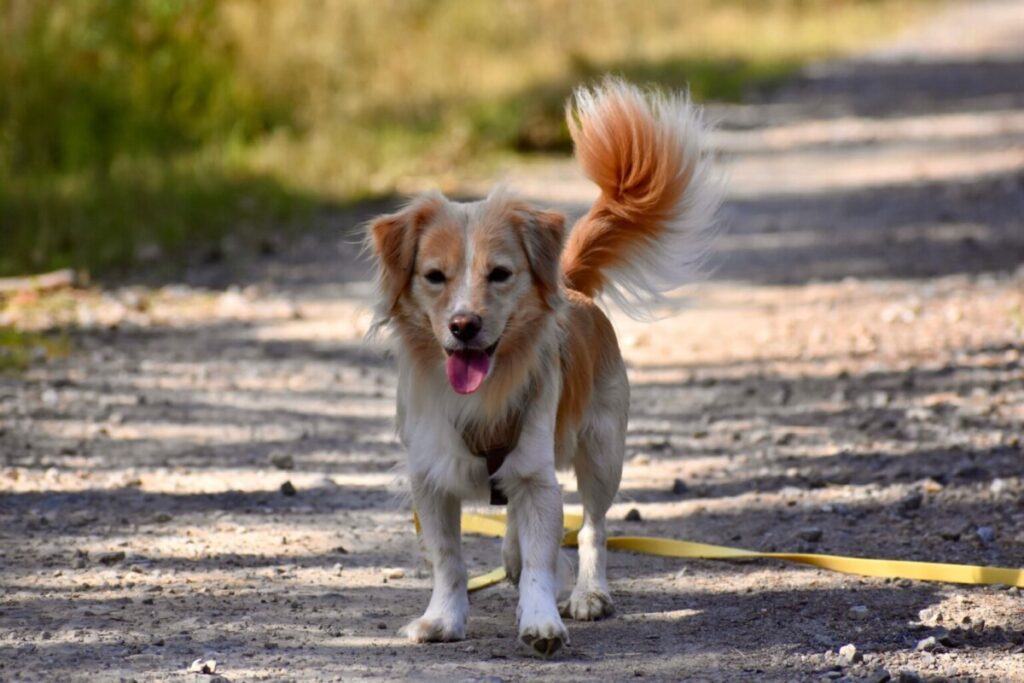
The Kokoni is a small breed of domestic dog found in Ancient Greece.
Its name comes from the word kokoni, which means daughter. In earlier times, daughters mainly lived in and around the house, so the kokoni became “the daughter’s dog” or “the dog for the house” instead of dogs used for hunting or guard dogs.
It is a breed of ancient origin, of medium size, with a height of up to 28 cm, with a trunk longer than their height, a triangular head, drooping ears, short hair on the face and front legs, medium or long on the chest, neck and hind legs and curved fluffy tail.
Kokoni’s are also found in representations on vases, statues, figurines and coins and from this, we can understand their close relationship with the ancient Greek family. They were also called “paresthesia” because they hung around at the women’s feet while preparing the food on the stove.
Also, the Athenian noblewomen took them with them to the market. There are many depictions of kokoni’s playing and accompanying children in ancient times, another fact that proves the trust and excellent relationship they maintained from ancient times to the present day with the Greek family.
Although they are a small breed, they are not necessarily the most trusting of dogs, but that doesn’t mean they don’t like cuddles. They are highly intelligent, adaptable, distinguished for their nobility, very easy to train, love deeply and unconditionally and can make excellent therapy dogs.
They are a hardy breed, proven by the fact that they managed and survived as strays on the streets of ancient Greece.
Cretan sighthound
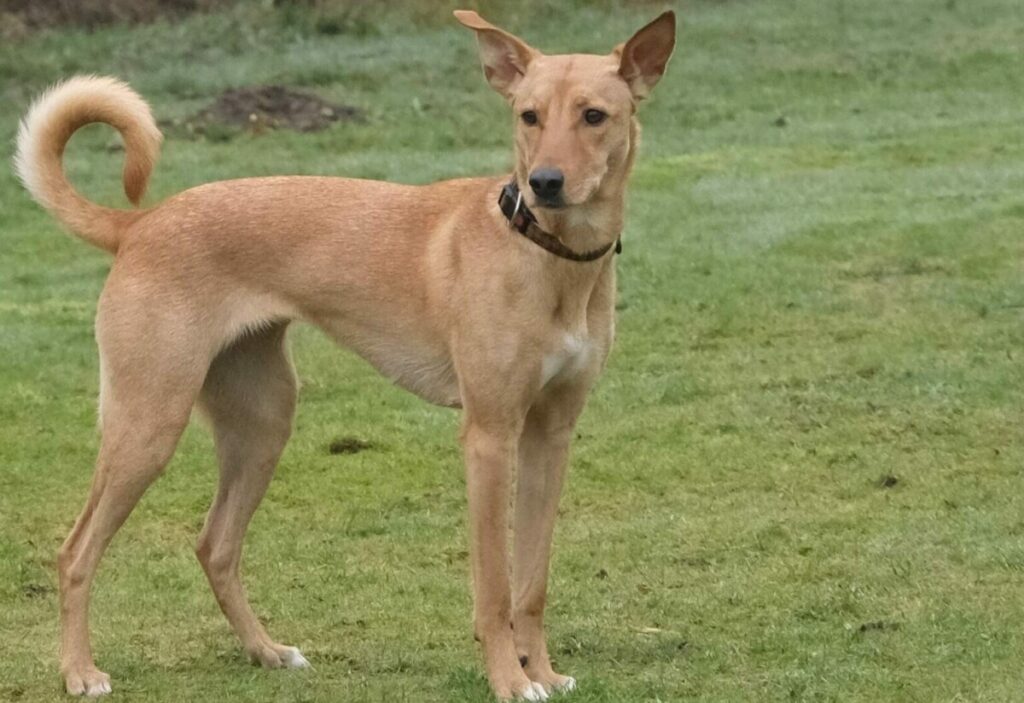
The Cretan sighthound is an ancient Greek dog breed found on the island of Crete. It is considered one of the oldest hunting breeds in Europe, with a history that begins in 3,200 BC! Its form is found in archaeological findings 5000 years old in their homeland, Crete.
It is a dog with a long slender body, a short, smooth coat, erect ears and a sturdy tail. It can reach a height of 59 cm and a weight of 22 kg. It is hardy and can survive and hunt even in the most rocky and inaccessible areas.
They have a lean body, strong stamina and the ability to work long hours, and at the same time, they are extremely intelligent and have excellent instincts. It has an incredible sense of smell and is fast and agile, which makes it the ideal hunting dog.
Molossus of Epirus
The Molossus of Epirus is also an ancient breed of dog that was used to protect animals from carnivorous mammals such as the wolf, the jackal or the bear, in the mountainous regions of Greece and especially in the region of Epirus.
The ancient Greek Molossian tribe raised the Molossus of Epirus but also later in the time of Alexander the Great. Molossus was the son of Neoptolemus and Andromache and the grandson of Achilles. They are considered the progenitor of the Molossians of Epirus, from where the Molossians got their name.
It is a purely Greek breed believed to be one of the main ancestors of today’s Mastiff breed. The breed was mainly developed to participate in battles and as a guard dog. Alexander the Great took these dogs on campaigns with him to defend his flocks and to help him defeat his enemies.
They are quite large dogs, with a height that can reach 75 cm and a weight that often exceeds 60 kg. The Molossus of Epirus is still valued for its strength, intelligence and loyalty.
READ MORE: Cervus Elaphus – The Red Deer Of Greece.

